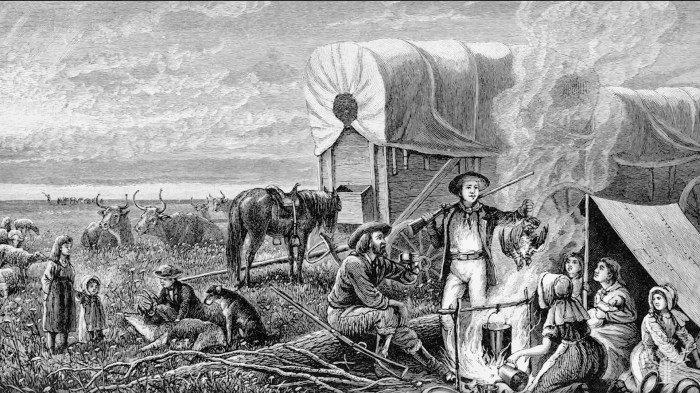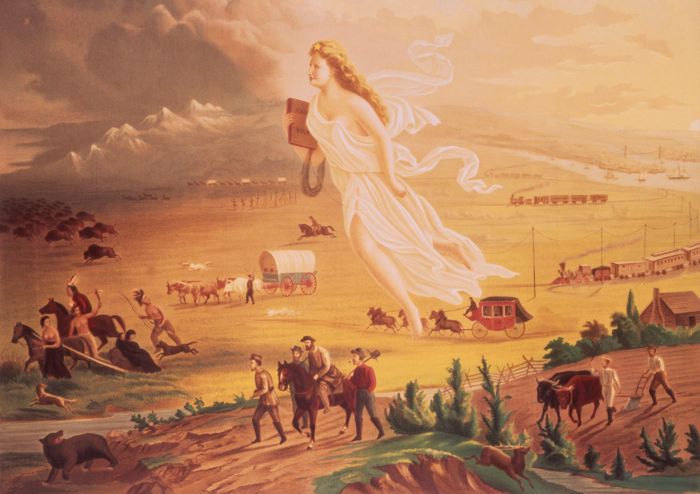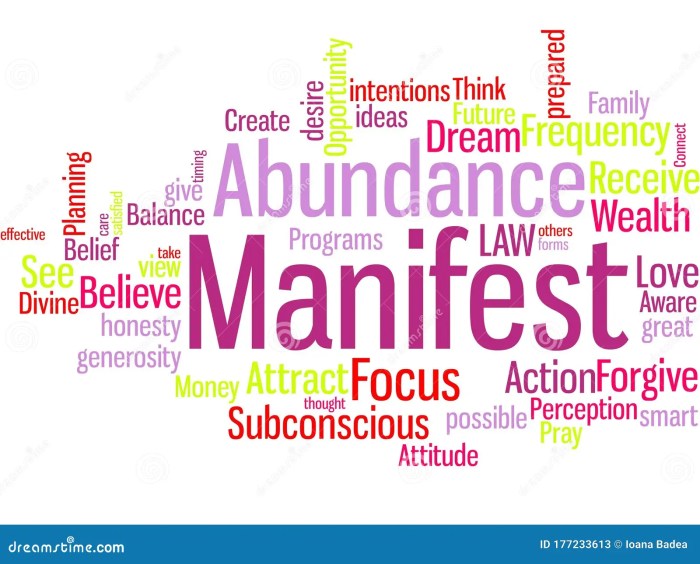Manifest Destiny word art offers a compelling lens through which to examine this pivotal era in American history. Beyond the historical narratives, the visual representation of the phrase itself—through diverse fonts, colors, and styles—reveals shifting interpretations and evolving understandings of Manifest Destiny’s complex legacy. From bold, declarative statements to subtly nuanced designs, the artistic choices reflect the ongoing debate surrounding this controversial concept.
This exploration delves into the fascinating interplay between historical context and artistic expression, revealing how word art can shape our perception of the past.
We’ll trace the evolution of visual representations of Manifest Destiny, from its initial depictions in paintings and literature to its modern-day iterations in film, television, and digital media. Examining specific examples of word art, we’ll analyze how variations in typography, color palettes, and layout influence the overall message and emotional impact. This journey will uncover the power of visual communication in shaping public understanding and fostering nuanced discussions about this defining chapter in American history.
Manifest Destiny: A Visual and Historical Exploration
Manifest Destiny, a term coined in the 1840s, encapsulates the belief that the United States was destined by God to expand its dominion and spread democracy across the North American continent. This concept, deeply rooted in American exceptionalism and fueled by territorial ambitions, had profound consequences, shaping the nation’s identity and leaving a complex legacy that continues to be debated today.
This exploration delves into the historical context, visual representations, and the impact of word art on the perception of Manifest Destiny.
Historical Context of Manifest Destiny
Understanding Manifest Destiny requires examining its historical evolution, ideological underpinnings, and diverse interpretations throughout history. A timeline reveals the key events and figures that propelled this expansionist ideology.
| Date | Event | Significance | Key Figures |
|---|---|---|---|
| 1803 | Louisiana Purchase | Doubled the size of the US, fueling westward expansion. | Thomas Jefferson |
| 1823 | Monroe Doctrine | Asserted US dominance in the Western Hemisphere, limiting European influence. | James Monroe |
| 1830s-1840s | Indian Removal Act & Trail of Tears | Forced displacement of Native American tribes, highlighting the brutal realities of westward expansion. | Andrew Jackson |
| 1845 | Annexation of Texas | Triggered the Mexican-American War, expanding US territory significantly. | John Tyler |
| 1846-1848 | Mexican-American War | Resulted in the US acquiring vast territories including California, Nevada, and Utah. | Zachary Taylor, Winfield Scott |
| 1848 | Treaty of Guadalupe Hidalgo | Formally ended the Mexican-American War, solidifying US territorial gains. | Nicholas Trist |
Philosophically, Manifest Destiny was underpinned by a belief in American exceptionalism – the idea that the US had a unique and divinely ordained mission to spread its values and institutions. This was intertwined with notions of racial superiority and a belief in the inherent right to conquer and settle new lands.
Interpretations of Manifest Destiny have varied over time. Initially celebrated as a triumphant narrative of national progress, later analyses have highlighted its destructive consequences for Native Americans and its role in perpetuating imperialism. Contemporary perspectives grapple with its legacy and its relevance to current debates about land rights, immigration, and national identity.
Visual Representations of Manifest Destiny

The concept of Manifest Destiny found powerful expression in art and literature, employing recurring motifs and symbols to convey its message. These visual representations played a crucial role in shaping public perception and bolstering support for westward expansion.
Paintings often depicted westward expansion as a divinely ordained mission, showcasing pioneers moving across vast landscapes, often overlooking the displacement and violence inflicted upon Native American populations. For instance, many paintings depicted covered wagons traversing prairies, symbolizing the journey westward and the promise of a new life. These images often omitted the harsh realities of the journey, including disease, starvation, and conflict with indigenous peoples.
The evolution of visual representations reflects shifting attitudes towards Manifest Destiny. Early depictions frequently emphasized the heroic aspects of westward expansion, while later works began to incorporate more critical perspectives, highlighting the human cost of this expansion.
- The westward-moving wagon train: Symbolized progress, opportunity, and the relentless march of civilization.
- The American flag: Represented national pride, expansion, and the assertion of American power.
- Vast landscapes: Emphasized the abundance and potential of the American West, often contrasting with the perceived limitations of the East.
- Native Americans: Often depicted as obstacles to progress or romanticized as noble savages, reflecting conflicting attitudes towards indigenous populations.
- Angel of Progress: A symbolic figure often associated with the expansion of civilization, sometimes depicted as leading the way westward.
“Manifest Destiny” as a Phrase in Word Art, Manifest destiny word art
The phrase “Manifest Destiny” itself lends itself to compelling word art. Different typographic styles and design choices dramatically alter the message and emotional impact.
| Example | Font Style | Color Palette | Overall Feeling |
|---|---|---|---|
| Example 1: Bold, sans-serif font in deep red on a stark white background. | Sans-serif, bold | Red, white | Powerful, assertive, perhaps aggressive. |
| Example 2: Elegant serif font in muted gold on a dark brown background. | Serif, elegant | Gold, brown | Sophisticated, historical, perhaps nostalgic. |
| Example 3: Geometric sans-serif font in vibrant blues and greens on a textured background. | Geometric sans-serif | Blues, greens | Modern, optimistic, perhaps slightly ironic. |
Imagine three distinct designs: A bold, minimalist design uses a stark sans-serif font in a bold red, conveying a sense of power and unwavering conviction. A Victorian-style design incorporates ornate flourishes and a serif font in deep brown and gold, suggesting a sense of historical grandeur and perhaps a touch of romanticism. A modern, geometric design employs a clean sans-serif font with sharp lines and a vibrant color palette, projecting a contemporary, perhaps even subtly critical, interpretation.
The Impact of Word Art on the Perception of Manifest Destiny

The visual presentation of “Manifest Destiny” in word art significantly influences its interpretation. The chosen font, color scheme, and overall design can either reinforce traditional narratives or challenge them, prompting critical reflection.
Word art can be a powerful tool for shaping contemporary discussions. A carefully designed piece can encourage a nuanced understanding of the complexities of Manifest Destiny, moving beyond simplistic narratives of progress and acknowledging the suffering inflicted on Native Americans and other marginalized groups. It can highlight the contradictions inherent in the concept, prompting critical engagement with its legacy.
Manifest Destiny Word Art in Modern Media
Manifest Destiny continues to resonate in modern media, often appearing in word art form to convey thematic elements or create a specific atmosphere.
- A film depicting the westward expansion might use a stylized “Manifest Destiny” title card to evoke a sense of historical grandeur or irony, depending on the film’s overall message.
- A video game set in the American West might incorporate the phrase as part of its in-game interface or narrative, subtly influencing the player’s understanding of the historical context.
- A television documentary could use a minimalist design to present the phrase objectively, prompting viewers to engage in critical analysis.
Modern interpretations often reflect a more critical and nuanced understanding of Manifest Destiny, acknowledging its complexities and problematic aspects. Word art designs in these contexts frequently move away from celebratory imagery, opting for a more subdued or even confrontational aesthetic.
Last Recap

Ultimately, the exploration of Manifest Destiny word art reveals a powerful interplay between historical context and artistic interpretation. The way we visually represent this pivotal period profoundly influences our understanding of its complexities and lasting consequences. By analyzing the stylistic choices and thematic interpretations embedded within various designs, we gain a richer appreciation for the ongoing debate surrounding Manifest Destiny and its enduring relevance in contemporary society.
The visual language of word art, therefore, serves not only as a reflection of the past but also as a catalyst for critical engagement with its legacy.
FAQ Section: Manifest Destiny Word Art
What are some common misconceptions about Manifest Destiny?
A common misconception is that Manifest Destiny was universally supported. In reality, it faced significant opposition from various groups, including abolitionists and Native Americans.
How has the interpretation of Manifest Destiny changed over time?
Initial interpretations often celebrated westward expansion as a divinely ordained mission. Modern interpretations tend to emphasize the negative consequences, such as displacement and violence against Native Americans.
Can word art be used to challenge traditional narratives of Manifest Destiny?
Absolutely. By employing unconventional styles or juxtaposing imagery, word art can subvert traditional celebratory representations and highlight the darker aspects of westward expansion.